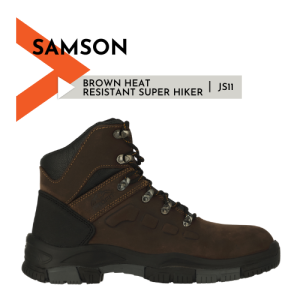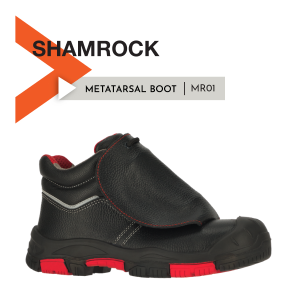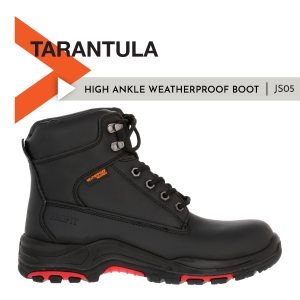In safety footwear, the sole material plays the most important role in providing chemical and diesel resistance, rather than the leather upper. Understanding why is simple when looking at the materials used and the properties involved in the construction of safety boots and how they interact with various substances.
Material Composition:
The upper part of a safety boot, typically made from leather (sometimes with synthetic materials as trim) serves primarily as a protective covering for the foot. Leather is favoured for its durability, breathability, and comfort but is inherently porous and can be susceptible to damage from chemicals and diesel. While leather can be treated to offer some level of water resistance and protect against minor spills, it cannot provide a complete barrier against harsher substances.
In contrast, the sole of a safety boot is made from materials specifically engineered to resist the effects of chemicals and diesel. Common sole materials include rubber, polyurethane (PU) and nitrile rubber. These materials are chosen for their chemical resistance properties, which make them well-suited to withstand exposure to oils, fuels, acids, and other hazardous substances.
Chemical and Diesel Resistance:
Rubber Soles: Rubber is a popular choice for safety boot soles due to its excellent chemical resistance. It can withstand exposure to various chemicals and diesel without degrading. This is because rubber is a non-porous material, meaning it does not allow liquids to penetrate, making it an effective barrier against chemicals and fuels.
PU Soles: Polyurethane soles offer good resistance to oils and chemicals. These materials are designed to be resistant to penetration and absorption by chemicals, ensuring that they maintain their structural integrity and provide a protective layer between the foot and hazardous substances on the ground.
Nitrile Rubber Soles: Nitrile rubber is highly resistant to oil, fuel, and many chemicals. It is often used in environments where exposure to diesel or other industrial chemicals is a concern. Nitrile rubber soles remain flexible and durable even when exposed to harsh substances.
Sole Design and Function:
The sole of a safety boot is engineered not only for chemical resistance but also for traction, impact absorption, and puncture resistance. The sole’s material is designed to handle direct contact with potentially hazardous substances, ensuring that the boot’s protective capabilities are not compromised. This is particularly important in industrial settings where workers may be exposed to spilled chemicals or diesel.
Leather Upper Limitations:
Leather, despite its many desirable qualities, has limitations when it comes to chemical resistance. The porous nature of leather allows for the absorption of liquids, which can lead to deterioration over time when exposed to harsh chemicals or diesel. Although leather can be treated with coatings or sealants to enhance its resistance to water and stains, these treatments are generally less effective against the aggressive substances found in industrial environments.
Practical Application:
In practice, while the leather upper provides comfort, support, and some level of protection, the sole’s chemical resistance is vital for ensuring the safety of workers in environments where contact with diesel or chemicals is common. The sole acts as the primary line of defence against hazardous substances on the ground, protecting both the boot’s internal components and the wearer’s feet.
The sole material of a safety boot is critical for chemical and diesel resistance due to its non-porous nature and specialised construction designed to withstand direct exposure to harsh substances. While the leather upper provides essential comfort and durability, it is the sole that ensures comprehensive protection against the chemical hazards commonly encountered in various industrial settings.










